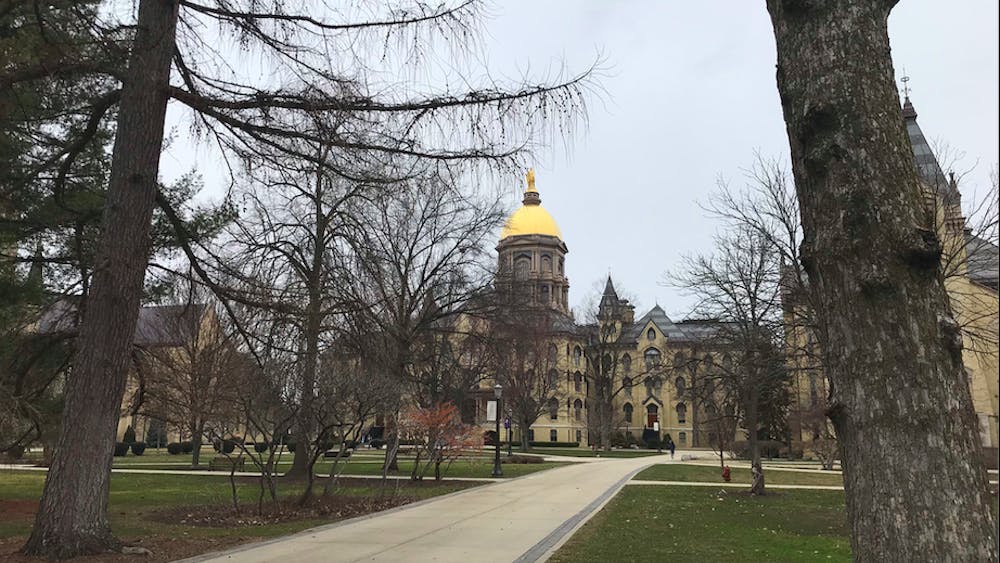Despite it being the most important star in the galaxy, the astronomy community still has a lot to learn about the sun. As a complex ball of gas and plasma, it proves enigmatic. However, with discoveries made by an interdisciplinary team of researchers at Notre Dame with funding from NASA, the world may reach a new understanding of the sun and its effects on our planet through the development of nanoantennas, or microscopic antennas that detect infrared light.
When Gary H. Bernstein, Frank M. Freimann chair professor of electrical engineering, proposed that the sun was a perfect application for the nanoantennas he had been developing for over 10 years, he didn’t know NASA would accept his application for a grant. Now, the research team has received funding to improve the nanoantennas to later be used on satellites to image infrared wavelengths, some of which cannot even get through the earth’s atmosphere.
The project is focused on developing nanoantennas so small that they can pick up infrared light, which is produced by wavelengths that cannot be studied by the human eye. For reference, the diameter of the end of a piece of hair is about 100 microns. The range of innovative nanoantennas that are being developed is between eight and 100 microns.
“[The sun] also has significant emissions at much longer wavelengths,” Bernstein said in a recent press release for the College of Engineering. “The more wavelengths we can detect, the more we can learn about what is happening on the sun. The technology we are developing will provide new insights into the physics of solar flares, sunspots and magnetic fields on the sun that contribute to weather on Earth.”
The research team includes members across disciplines who each dedicate their time and expertise to the project. The team includes Frank M. Freimann chair professor of electrical engineering Wolfgang Porod, research professor of electrical engineering Alexei Orlov and assistant professor of electrical engineering David Burghoff. The project also includes associate professor of aerospace and mechanical engineering Edward Kinzel, visiting assistant research professor Gergo Szakmany and external collaborators Steven White and David Strobel.
While Bernstein led the NASA proposal, the entire team has been essential to the development of the infrared light detectors.
“I volunteered to be the lead on the proposal and could not have done it with all the great data that everybody had already achieved, and all the input from everybody in the group,” Bernstein said.
The team hopes the nanoantennas will make a positive impact in understanding the sun and infrared light.
“We decided that a good target for our infrared sensors would be to perhaps help get involved in the solar astronomy community by offering them a way of looking at the full spectrum of infrared light coming from the sun,” Bernstein said.
While most of the research team is composed of highly-informed professors and researchers, sophomore research assistant David Garcia is learning through his experiences with the project, yet proves to be an asset to the project.
“[Garcia is] becoming a useful member of the team because he’s starting to do computer simulations that are actually of value to us in our research,” Bernstein said. “So, in one year he’s gone from being an observer to being a participant.”
Garcia had little knowledge of infrared sensors before joining the team. However, he has continuously learned since joining the team last spring during his first year.
“When I first started, I didn’t have any clue about it,” Garcia said. “I started from a point where I was not able to explain to my parents what I was doing, and today I’m actually able to answer questions about the topic and participate in group meetings.”
Garcia works with computer simulations to test the nanoantennas and optimize the design.
“I basically work with simulations to create scenarios and decide which antenna design is the best,” Garcia said. “I make simulations of heat transfer to see how the temperature is distributed on the surface of the antenna. I also sometimes make measurements of the frequencies the antennas receive and the efficiency of the antenna.”
Garcia enjoys being able to apply the topics he is learning in the classroom and on the research project to real-world situations.
“One fear I had before doing research was that I was going to do something useless,” Garcia said. “Thankfully, it’s not the case because the research is really design-based.”
The team is making discoveries that could be useful to the astronomy community, proving their research here can make an impact beyond the campus community.
“We decided that the sun would make a good testbed for a community of solar physicists and solar astronomers who could use the data,” Bernstein said. “We now have three years of funding to not only improve our nanoantennas, but to get them into the hands of solar astronomers and to introduce it to them as a new tool in their toolbox.”
Read More
Trending









